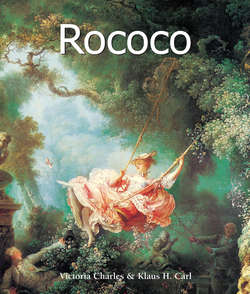Читать книгу Rococo - Victoria Charles - Страница 10
I. Rococo in France
The Architects
ОглавлениеIn French architecture in the 17th century, there was a counter-movement against the pompous, heavy Baroque style of Charles Le Brun (1619–1690), with a strict classicism that predominated in the extension of the Louvre by Claude Perrault (1613–1688). His main works as an architect are the eastern and southern external façades of the Louvre (the eastern side is the famous Colonnade). Perrault, in addition to his work as a doctor, was also a philologist and an art theoretician. He translated Vitruvius’s Ten Books about Architecture and wrote a system of column orders which lasted for many years.
However, an original French style of building was created only by the leading architect of the age, Jules Hardouin-Mansart (1646–1708), who at the young age of 30 was named Court Architect to his sovereign and invented the most effective decorative forms of the Baroque style with the structural rigidity of classicism. The sphere of his major work was in fact the Palace of Versailles with its chapel, royal chambers and the Grand Trianon, built for the last mistress and presumably secret wife of Louis XIV, the Marquise de Maintenon (1635–1719), and restored by Napoleon I (1769–1821), as well as the Orangerie. The most important of his artistic works is without a doubt the dome of Les Invalides (the former hospital in Paris for war veterans) completed in 1708, the cupola of which is a masterly combination of monumental effect and French elegance. Jules Hardouin-Mansart, in all of his works, created the foundations for the elegant decorative lines of the architecture and the ornamentation of the façades.
Jules Hardouin-Mansart, Orangerie, 1684–1686.
Domaine national du château de Versailles, Versailles.
Antoine Watteau, Fêtes Vénitiennes, 1718–1719.
Oil on canvas, 55.9 × 45.7 cm.
National Gallery of Scotland, Edinburgh.
Maurice-Quentin Delatour, Full-length Portrait of the Marquise of Pompadour, 1748–1755.
Pastel on gray-blue paper with gouache highlights, the face cut out and mounted on the paper, 177 × 130 cm.
Musée du Louvre, Paris.
Jean-Baptiste Perronneau, Madame de Sorquainville, 1749.
Oil on canvas, 101 × 81 cm.
Musée du Louvre, Paris.
But all was not purely restricted to Paris. For example in Strasbourg there was the Bishop’s Palace built by Joseph Massol (c. 1706–1771) from the plans of the “royal architect” Robert de Cotte (1656/57–1735), a brother-in-law of Hardouin-Mansart, the Hotel Rohan from Massol’s plans (1731–1742), the Hotel de Hanau-Lichtenberg (1730–1736), two houses for wealthy bourgeois families (1750–1751) and also the Jesuit College (1757–1759), planned by Le Mire and built by Massol. In Nancy the eye is taken by the wonderful Place Stanislas, named after a Polish king, the Place de la Carrière and the Place de l’Hermicycle, all built in the years between about 1750 and 1760. The complete entity of these three squares is preserved as a UNESCO World Heritage Site.
